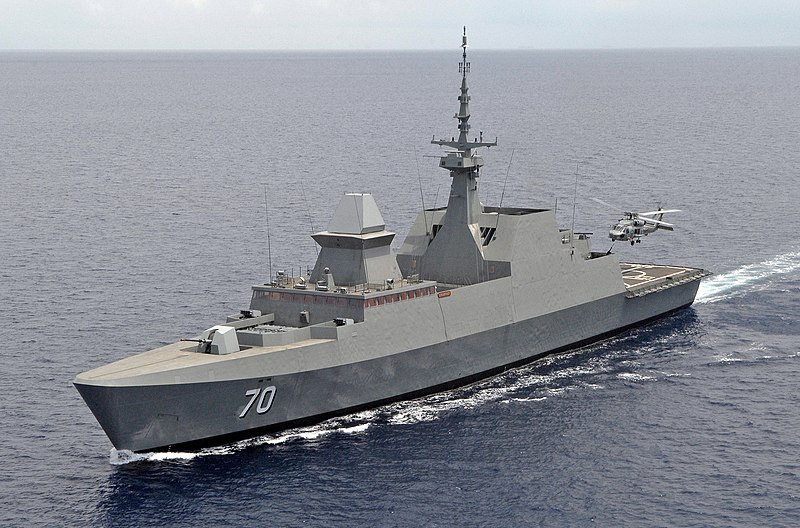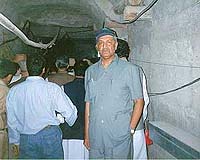Boeing Awarded US Army Contract for 191 CH-47F Chinook Helicopters
(NSI News Source Info) ST. LOUIS - August 26, 2008: The Boeing Company [NYSE: BA] has been awarded a five-year U.S. Army contract valued at $4.3 billion for 181 CH-47F Chinooks and 10 additional Chinooks under Fiscal Year 2008 supplemental funding. There are options in the award for an additional 24 aircraft over the course of the contract.
"This multiyear award will yield a cost savings of more than $449 million for the U.S. Army and taxpayers," said Jack Dougherty, vice president, Boeing H-47 Programs. "This also builds security into our production schedule for the next five years, stabilizing the work force for Boeing and for our supplier partners in more than 45 states."
"The Army is committed to providing an outstanding CH-47F Chinook aircraft to our soldiers in the field," said Col. Newman Shufflebarger, Army project manager for Cargo Helicopters. "This multiyear award not only allows the Army to field this important aircraft at a substantial savings, but enabled the contractor to enter long-term agreements for specialty metals, to include titanium, which significantly reduced long-lead times for these critical materials. The Army was able to reduce the lead time associated with a new-build aircraft by six months."

Also from the U.S. Army, Lt. Col. Thomas H. Todd III, product manager for CH-47F, said, "This multiyear settlement is the result of the tireless efforts of government and Boeing representatives. It ensures that our soldiers will maintain a technological advantage over our adversaries when it comes to heavy-lift missions."
"A long-term contract commitment is good for the warfighter, the Army customer and U.S. business," said Ken Eland, chief engineer for Boeing Tandem Rotor Programs and capture team leader for the company's CH-47F multiyear pursuit. "This award enables Boeing and our Team Chinook partners to make capital investments to reduce lead times for parts and components, improve parts availability and provide for a more accurate delivery schedule, which will enable greater precision in fielding the Chinook to U.S. Army units."
Boeing Rotorcraft Systems has delivered 48 CH-47F helicopters to the U.S. Army to date and has fully trained and equipped two units, with a third unit scheduled to stand up in August. Since the aircraft received its combat-ready certification from the Army in 2007, the F-model has completed several thousand flight hours, including deployments to Liberia in support of U.S. President George Bush, and is currently undergoing its first deployment to Iraq.
As with its predecessors, the CH-47F continues to excel across the full spectrum of operational missions, including air assault, combat re-supply, humanitarian relief, search and rescue, and transport operations.
Built at the Boeing Rotorcraft Systems facility in Ridley Township, Pa., the CH-47F helicopter delivers greater mission-critical capability for the warfighter with a newly designed, improved airframe, a Rockwell Collins Common Avionics Architecture System (CAAS) cockpit, and a BAE-designed Digital Advanced Flight Control System (DAFCS).
The CAAS greatly improves aircrew situational awareness, and DAFCS provides dramatically improved flight-control capabilities through the entire flight envelope, significantly improved performance and safety in the harshest of environments.
CAAS also incorporates an advanced digital map display and a data transfer system that allows storing of preflight and mission data. Improved survivability features include the Common Missile Warning and Improved Countermeasure Dispenser systems.
Powered by two 4,733-horsepower Honeywell engines, the new CH-47F can reach speeds greater than 175 mph and transport more than 21,000 pounds. The CH-47F, with the Robertson Aviation Extended Range Fuel System, has a mission radius of more than 400 nautical miles.
 The United Nations refugee agency assisting the voluntary return of registered Afghans from Pakistan said that the number returned in 2008 had passed the 200,000 mark over the weekend. An Afghan family climbed onto a truck for the trip home from Peshawar, Pakistan, where an American diplomat was attacked by gunmen Tuesday. The diplomat, riding in a bulletproof vehicle, was not wounded.
The United Nations refugee agency assisting the voluntary return of registered Afghans from Pakistan said that the number returned in 2008 had passed the 200,000 mark over the weekend. An Afghan family climbed onto a truck for the trip home from Peshawar, Pakistan, where an American diplomat was attacked by gunmen Tuesday. The diplomat, riding in a bulletproof vehicle, was not wounded.
 In the Kabal district of the Swat Valley in northwestern Pakistan, people gathered at the destroyed house of a brother of a provincial lawmaker after the house was hit by a rocket. The attack killed the brother of Waqar Ahmed Khan, two of his nephews and five others according to the police.
In the Kabal district of the Swat Valley in northwestern Pakistan, people gathered at the destroyed house of a brother of a provincial lawmaker after the house was hit by a rocket. The attack killed the brother of Waqar Ahmed Khan, two of his nephews and five others according to the police.





































